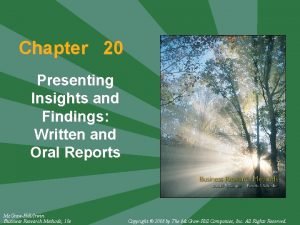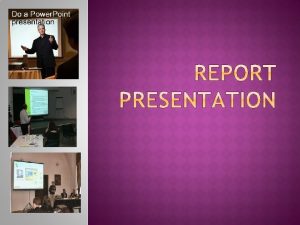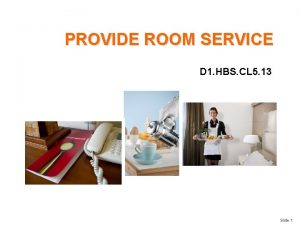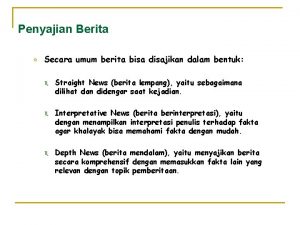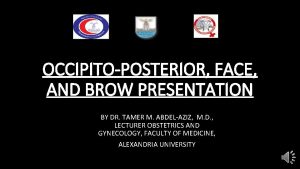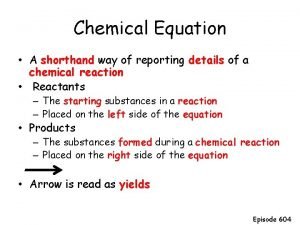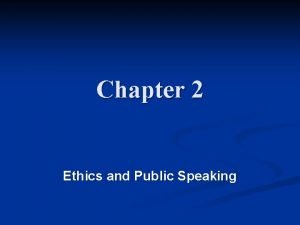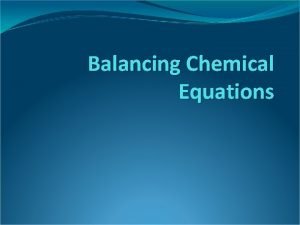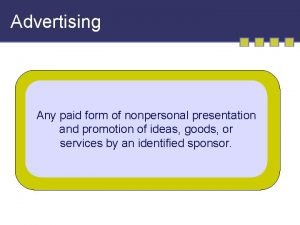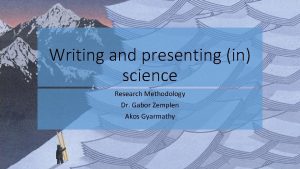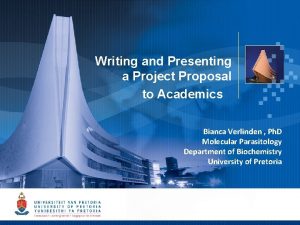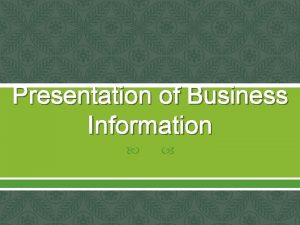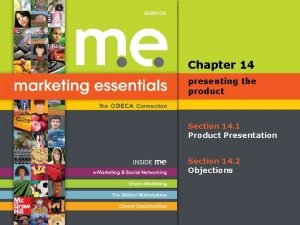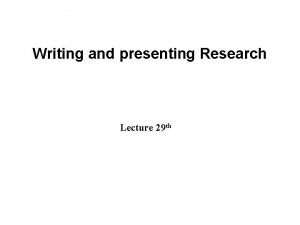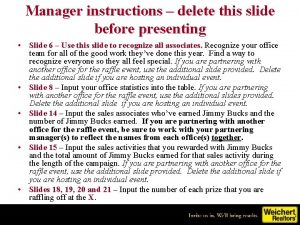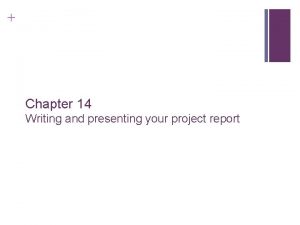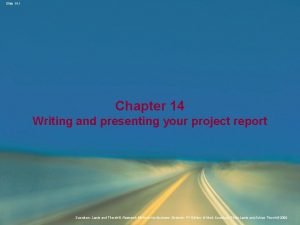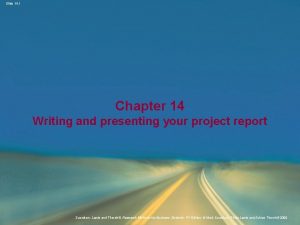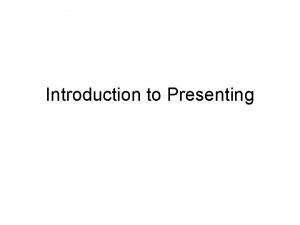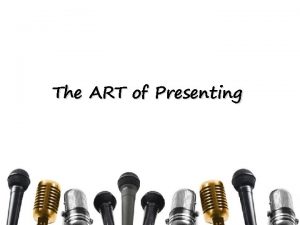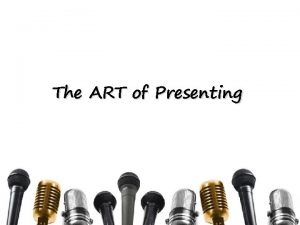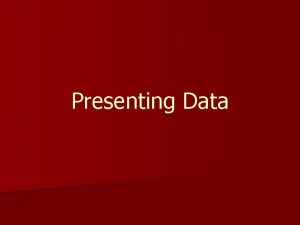Slide 14 1 Lecture 14 Writing and presenting



















- Slides: 19

Slide 14. 1 Lecture 14 Writing and presenting your project report Saunders, Lewis and Thornhill, Research Methods for Business Students , 5 th Edition, © Mark Saunders, Philip Lewis and Adrian Thornhill 2009

Slide 14. 2 Getting started with writing Practical hints • Create time for your writing • Write when your mind is fresh • Find a regular writing place • Set goals and achieve them • Use word processing • Generate a plan for the report • Finish each writing session on a high point • Get friends to read and comment on your work Saunders, Lewis and Thornhill, Research Methods for Business Students , 5 th Edition, © Mark Saunders, Philip Lewis and Adrian Thornhill 2009

Slide 14. 3 Structuring your research report Suggested structure • Abstract • Introduction • Literature review • Method • Results • Discussion • Conclusions • References • Appendices Saunders, Lewis and Thornhill, Research Methods for Business Students , 5 th Edition, © Mark Saunders, Philip Lewis and Adrian Thornhill 2009

Slide 14. 4 Writing for different audiences Key differences between an ‘Academic’ report and a ‘Consultancy’ or ‘Management’ report The academic report: • Tends to be longer • Will be marked and graded • Will contain contextual descriptions The consultancy report: • Has less focus on the development of theory • Contains recommendations relating to the organisation’s business Saunders, Lewis and Thornhill, Research Methods for Business Students , 5 th Edition, © Mark Saunders, Philip Lewis and Adrian Thornhill 2009

Slide 14. 5 Report structure (1) The abstract Four short paragraphs that answer the questions: 1. What were my research questions and why were they important? 2. How did I go about answering the research questions? 3. What did I find out in response to these questions? 4. What conclusions can be drawn? Adapted from Saunders et al. (2009) Saunders, Lewis and Thornhill, Research Methods for Business Students , 5 th Edition, © Mark Saunders, Philip Lewis and Adrian Thornhill 2009

Slide 14. 6 Report structure (2) Introduction - include • The research questions(s) and a clear statement of research objectives • Brief background a guide to the storyline Literature review - purpose • To set your study in the wider context • To show your study supplements existing work Saunders, Lewis and Thornhill, Research Methods for Business Students , 5 th Edition, © Mark Saunders, Philip Lewis and Adrian Thornhill 2009

Slide 14. 7 Report structure (3) Checklist Complete the Checklist (next page) for points to include in your method chapter Developed from Robson (2002) Saunders, Lewis and Thornhill, Research Methods for Business Students , 5 th Edition, © Mark Saunders, Philip Lewis and Adrian Thornhill 2009

Slide 14. 8 CHECKLIST - Points to include in your method chapter • Setting • What was the research setting? • Why did you choose that particular setting? • What ethical issues were raised by the study, and how were these addressed? • Participants • • How many? How were they selected? What were their characteristics? How were refusals/non-returns handled? • Materials • What tests/scales/interview or observation schedules/questionnaires were used? • How were purpose-made instruments developed? • How were the resulting data analysed? • Procedures Source: Developed from Robson (2002) Real World Research, 2 nd edn. , Oxford: Blackwell. Reproduced with permission. Saunders, Lewis and Thornhill, Research Methods for Business Students , 5 th Edition, © Mark Saunders, Philip Lewis and Adrian Thornhill 2009

Slide 14. 9 CHECKLIST - Points to include in your method chapter • Procedures • What were the characteristics of the interviewers and observers, and how were they trained? • How valid and reliable do you think the procedures were? • What instructions were given to participants? • How many interviews/observations/questionnaires were there; how long did they last; where did they take place? • When was the research carried out? Source: Developed from Robson (2002) Real World Research, 2 nd edn. , Oxford: Blackwell. Reproduced with permission. Saunders, Lewis and Thornhill, Research Methods for Business Students , 5 th Edition, © Mark Saunders, Philip Lewis and Adrian Thornhill 2009

Slide 14. 10 Report structure (4) Results chapter(s) - purpose • To report the facts your research discovered • To support the facts with quotes from participants Discussion chapter- purpose • To interpret results and relate the findings to the original research goals and objectives • To indicate implications of the research Saunders, Lewis and Thornhill, Research Methods for Business Students , 5 th Edition, © Mark Saunders, Philip Lewis and Adrian Thornhill 2009

Slide 14. 11 Report structure (5) Using a matrix in the planning of the content for the results and conclusions chapters Saunders et al. (2009) Figure 14. 1 Using a matrix in the planning of the content for the results and conclusions chapters Saunders, Lewis and Thornhill, Research Methods for Business Students , 5 th Edition, © Mark Saunders, Philip Lewis and Adrian Thornhill 2009

Slide 14. 12 Report structure (6) Conclusion chapter – purpose • To answer the research question(s) • To meet the research objectives • To consider the findings • To present any contributions to the topic displayed in the literature • To reflect on any implications for future research Saunders, Lewis and Thornhill, Research Methods for Business Students , 5 th Edition, © Mark Saunders, Philip Lewis and Adrian Thornhill 2009

Slide 14. 13 Report structure (7) References • Use a convention that is accepted by Cambridge School (e. g. Harvard, APA) • Cite all sources referred to in the text • Check all citations to prevent plagiarism Appendices • Include only essential supporting material • Include copies of interview schedules • Keep appendices to a minimum Saunders, Lewis and Thornhill, Research Methods for Business Students , 5 th Edition, © Mark Saunders, Philip Lewis and Adrian Thornhill 2009

Slide 14. 14 Organising the report content (2) Main points to consider • Choosing the title • Telling a clear story • Helping the reader by. Dividing your work Previewing and summarising chapters Using suitables and graphics Writing in a suitable style Saunders, Lewis and Thornhill, Research Methods for Business Students , 5 th Edition, © Mark Saunders, Philip Lewis and Adrian Thornhill 2009

Slide 14. 15 Writing style Key points: • Clarity and simplicity – avoid jargon • Checking grammar and spelling • Preserving anonymity • Regularly revising each draft Saunders, Lewis and Thornhill, Research Methods for Business Students , 5 th Edition, © Mark Saunders, Philip Lewis and Adrian Thornhill 2009

Slide 14. 16 Evaluating the first draft Checklist Complete the Checklist in the next page to help you evaluate the first draft Saunders et al. (2009) Saunders, Lewis and Thornhill, Research Methods for Business Students , 5 th Edition, © Mark Saunders, Philip Lewis and Adrian Thornhill 2009

Slide 14. 17 CHECKLIST - Evaluating your first draft • Is there a clear structure? • Is there a clear storyline? • Does your abstract reflect accurately the whole content of the report? • Does your introduction state clearly the research question(s) and objectives? • Does your literature review inform the later content of the report? • Are your methods clearly explained? • Have you made a clear distinction between findings and conclusions in the relevant chapters? • Have you checked all your references and presented these in the required manner? Saunders, Lewis and Thornhill, Research Methods for Business Students , 5 th Edition, © Mark Saunders, Philip Lewis and Adrian Thornhill 2009

Slide 14. 18 CHECKLIST - Evaluating your first draft • Is there any text material that should be in the appendices or vice versa? • Does your title reflect accurately your content? • Have you divided up your text throughout with suitable headings? • Does each chapter have a preview and a summary? • Are you happy that your writing is clear, simple and direct? • Have you eliminated all jargon? • Have you eliminated all unnecessary quotations? • Have you checked spelling and grammar? • Have you checked for assumptions about gender? • Is your report in a format that will be acceptable to the assessing body? Saunders, Lewis and Thornhill, Research Methods for Business Students , 5 th Edition, © Mark Saunders, Philip Lewis and Adrian Thornhill 2009

Slide 14. 19 Oral presentation Three key stages: • Planning and preparation • Use of visual aids • Presenting Saunders, Lewis and Thornhill, Research Methods for Business Students , 5 th Edition, © Mark Saunders, Philip Lewis and Adrian Thornhill 2009
 Heel and toe polka dance steps
Heel and toe polka dance steps 01:640:244 lecture notes - lecture 15: plat, idah, farad
01:640:244 lecture notes - lecture 15: plat, idah, farad Chapter 18 visual merchandising and display
Chapter 18 visual merchandising and display Presenting insights and findings
Presenting insights and findings Thank you gentlemen
Thank you gentlemen How to factor binomials
How to factor binomials Room service area
Room service area Name of presenting organization meaning
Name of presenting organization meaning Presenting information in different ways
Presenting information in different ways Teknik penyajian berita langsung
Teknik penyajian berita langsung Presenting diameter in occipito posterior
Presenting diameter in occipito posterior Shorthand way of representing chemical reaction
Shorthand way of representing chemical reaction Avoid prejudging the speaker
Avoid prejudging the speaker Shorthand way of describing a reaction
Shorthand way of describing a reaction Is a paid form of presenting the product.
Is a paid form of presenting the product. Presenting research methodology
Presenting research methodology Presenting a research proposal
Presenting a research proposal Slidetodoc.com
Slidetodoc.com Presenting problem
Presenting problem Presenting the product
Presenting the product



